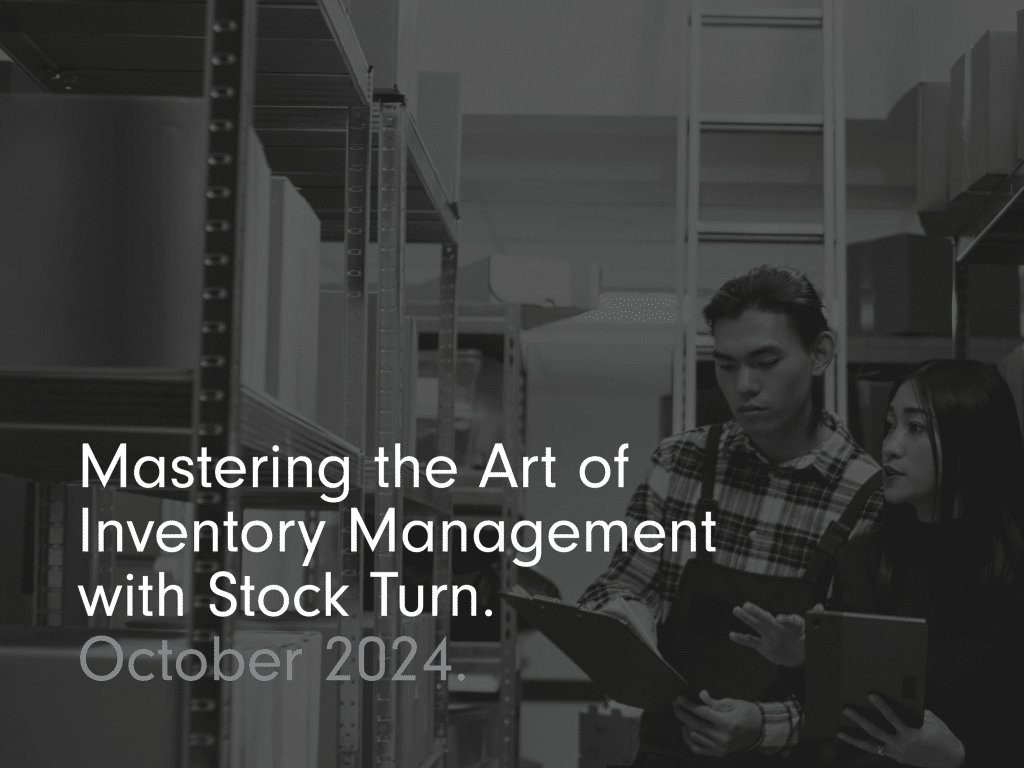Mastering the Art of Inventory Management with Stock Turn.

In the bustling world of inventory management, understanding stock turn can be a game-changer. This crucial metric helps inventory managers and supply chain professionals make informed decisions that impact operational efficiency, cash flow, and customer satisfaction. In this blog post, we’ll explore what stock turn is, why it matters, how to calculate it, and strategies for improving it. Plus, we’ll look at real-world case studies and the latest tools and technologies to aid in stock turn analysis.
Introduction to Stock Turn/Stock Rotation
Stock turn, also known as stock rotation or inventory turnover ratio, is a measure of how quickly inventory is sold and replaced over a given time period. It is a key indicator of inventory efficiency and can help identify whether a business is overstocked or understocked.
Understanding stock rotation is essential for inventory managers and supply chain professionals. By keeping track of this metric, you can ensure that your stock levels are aligned with demand, reducing excess inventories and carrying costs.
In this blog, we’ll take a closer look at stock turn, its importance, and how to optimise it for better business performance.
Why Stock Rotation Matters
Stock rotation has a significant impact on several aspects of business operations. Here are three main reasons why it matters:
Impact on Operational Efficiency
High inventory turnover indicates that goods are selling quickly, reducing the amount of time items spend in storage. This leads to lower carrying costs and less risk of perishable goods expiring. Efficient stock rotation ensures that raw materials and finished products are always fresh, improving overall operational efficiency.
Influence on Cash Flow
A higher stock turn means that capital tied up in inventory is converted into revenue more quickly. This improves cash flow, allowing businesses to invest in growth opportunities or pay off liabilities. On the other hand, low turnover rates can strain cash flow and lead to excess inventories, which may need to be discounted or written off.
Effect on Customer Satisfaction
Maintaining optimal stock levels ensures that customers can find the products they need when they need them. This prevents stockouts and enhances customer satisfaction. Conversely, poor stock turn can lead to either stock shortages or overstock situations, both of which negatively impact the customer experience.
Stock turn is a vital metric that influences a company’s efficiency, financial health, and customer happiness. Now, let’s move on to how you can calculate this important figur
Calculating Stock Turn

Calculating stock turn is straightforward but requires accurate data. The basic formula for stock turn is:
Stock Turn = Cost of Goods Sold (COGS) / Average Inventory
To break it down:
- Cost of Goods Sold (COGS) – This represents the direct costs attributed to the production of goods sold by a company. This includes the cost of raw materials and direct labour.
- Average Inventory – This is typically calculated by adding the beginning inventory and ending inventory for a period, then dividing by two.
Example Calculation
Suppose a company has a COGS of £500,000 and an average inventory of £100,000. The stock turn would be:
Stock Turn = £500,000 / £100,000 = 5
This means the company sells and replaces its inventory five times a year. Interpreting this result can help managers understand whether their inventory levels are too high or too low relative to sales.
Using an inventory turnover calculator can simplify this process and provide more accurate results by accounting for variations in stock levels over time.
Improving Stock Rotation

Improving stock rotation requires a strategic approach. Here are some effective strategies:
Demand Forecasting
Accurate demand forecasting helps predict customer needs and adjust inventory levels accordingly. This reduces the risk of stockouts and excess inventories, ensuring a balanced stock level.
Inventory Control
Implementing robust inventory control measures, such as First Expired, First Out (FEFO) for perishable goods, can help maintain optimal inventory levels. Regular audits and cycle counts can also identify discrepancies and prevent stock issues.
Supplier Management
Building strong relationships with suppliers can lead to better terms and more reliable delivery schedules. This allows businesses to order smaller quantities more frequently, reducing the risk of excess stock and improving turnover rates.
These strategies, when implemented effectively, can significantly improve stock rotation, leading to better inventory management and overall business performance.
Case Studies
Real-world examples can provide valuable insights into the practical application of stock turn principles. Let’s look at two companies that successfully improved their stock turn:
Company A
Company A, a mid-sized retailer, struggled with low stock turnover and high carrying costs. By implementing demand forecasting tools and improving supplier management, they increased their stock turn from 4 to 8 times per year. This led to a 20% reduction in carrying costs and improved cash flow.
Company B
Company B, a food and beverage distributor, faced issues with perishable goods expiring before being sold. They introduced FEFO inventory control and regular audits, resulting in a 30% reduction in expired stock and a higher stock turn. Customer satisfaction also improved due to fresher products.
These case studies demonstrate the tangible benefits of focusing on stock turn and adopting best practices in inventory management.
Tools and Technologies

Advancements in technology have made it easier to monitor and improve stock turn. Here are some tools and technologies that can help:
Inventory Management Software
Solutions like NetSuite and SAP provide comprehensive inventory management features, including real-time tracking, automated reordering, and detailed analytics. These tools can help businesses maintain optimal inventory levels and improve turnover rates.
Demand Forecasting Tools
Tools like ForecastX and TradeGecko use historical data and machine learning algorithms to predict future demand accurately. This helps businesses adjust their stock levels to match expected sales, reducing the risk of overstocking or stockouts.
Supplier Management Platforms
Platforms like Procurify and GEP SMART offer features for supplier collaboration, contract management, and performance tracking. These tools can help businesses build stronger supplier relationships and improve the efficiency of their supply chain.
Leveraging these tools can streamline inventory management processes and enhance stock turn analysis, leading to better business outcomes.
Conclusion
In summary, stock turn is a critical metric for inventory managers and supply chain professionals. It impacts operational efficiency, cash flow, and customer satisfaction. By understanding how to calculate and improve stock turn, businesses can optimise their inventory levels and achieve better financial performance.
Remember to utilise demand forecasting, inventory control, and supplier management strategies to enhance your stock turn. Additionally, consider adopting the latest tools and technologies to automate and improve your stock turn analysis.
To learn more about optimising your inventory management and improving stock turn, don’t hesitate to reach out to our experts. Your journey towards better inventory efficiency starts today.
Frequently Asked Questions.
Stock turn, also known as inventory turnover, is a metric that measures how many times a company’s inventory is sold and replaced over a specific period. It helps businesses understand their inventory efficiency and optimize stock levels.
Stock turn is important because it affects a company’s cash flow, operational efficiency, and ability to meet customer demands. A higher stock turn rate indicates that inventory is moving quickly, which can lead to reduced carrying costs and increased revenue.